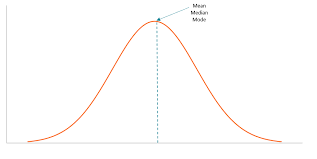You are probably already making $1,000 per hour and just don’t realize it.
This astounding claim is the most interesting point of Perry Marshall’s book 80/20 Sales and Marketing. (My full review of the book is here.) If you’ve not written off the idea of this and your mind is still open, I invite you to consider the tasks you complete in a week of work.
According to Marshall, the distribution of virtually every data set is divided into an 80/20 distribution. Unlike a Bell curve we learn in statistics, an 80/20 distribution is a different type of curve essentially weighting the most important (the 20%) on the side of the plot. Remember from your statistics course that a Bell curve looks like this:

Notice the highest point on the curve is the average or mean. The challenge of thinking in terms of Bell curves as a business owner is that the clients that generate the most revenue for your company are on the extremes. They are the ones outside one standard deviation. It is these clients who disproportionately impact your bottom line.
Marshall contends that instead of creating products and serving the “mean” client, products should be created for the 20% that will propel your business. The 20% of the clients impacting your business are producing 80% of the profits. That is the application of Vilfredo Pareto’s theory to business.
This chart is a visual representation of the contrast in the two data distributions where the orange section represents the 20% of the population impacting 80% of the outputs:

What does this have to do with $1,000 per hour work?
According to Marshall, every data set is broken down in the Pareto distribution, including time. (Find his data analyser here.) If a worker earns $20 per hour, then the value of his time to his employer is not all equal. According to the data distribution, 30 minutes of his time will be worth $150 per hour and at least one minute is worth $1,000 per hour.
Obviously, the value of time goes up with a higher paid employee and can easily reach into tens or hundreds of thousands of dollars of value per hour of work.
Aside from being a data nerd, this has practical implications for me and my clients. I have the great fortune of serving business owners looking to grow their companies. To grow a company, a leader must delegate low-value work to those with the ability to complete the task and then continue to accept and produce more high-value work.
The low value work like e-mail, scheduling appointments and transaction level work should be delegated to your all-star employees who love this work and are great at it. This process should free up the owner to tackle the highest value projects.
Think about your time. Was there a time you made $10,000 per hour? Absurd right?
Did you ever put together a presentation taking 5 hours which led to you eventually securing $50,000 worth of business?
Have you ever played a round of golf with a prospect and eventually landed $100,000 worth of revenue? (Aren’t you glad you learned to golf?)
Of course you have stories like this. So do I. As a business owner, I’m seeking to spend my time where I’m best. My highest value for my company is in communication, strategy, content, vision and processes. As a CPA, I can save my clients thousands and hundreds of thousands of dollars with what I do. If I can train others to do this and create a process for it, I can grow a company and serve clients for the long term.
That requires me to work on the business not in it.
This concept won’t mean much for you if you just want to work in your business. If you’ve read this far, that’s most likely not you.
This concept should propel the growth in outsourced accounting as business owners realize paying bills, reconciling accounts and bookkeeping is a giant underuse of their time.
A business owner’s time is best spent on the highest value work to lead their company.
My biggest takeaway from this book is I need to delegate more and quicker. As my company continues to grow, I need to delegate more tasks so I can work in my sweet spot and shoot for $10,000 per hour work. The transaction level work needs to be pushed to employees competent and empowered to complete these. Vision, communication and products will propel the growth of my firm in ways doing the transaction work never could.
How about you?
When you look at the tasks you complete each day, how many of them could be delegated to an employee making $15 per hour? $50? $100?
There are more options for help in our digital economy than ever before. Make a goal of delegating one task this month. Write a procedure, train and delegate so that you can be liberated to pursue your highest and best work.
